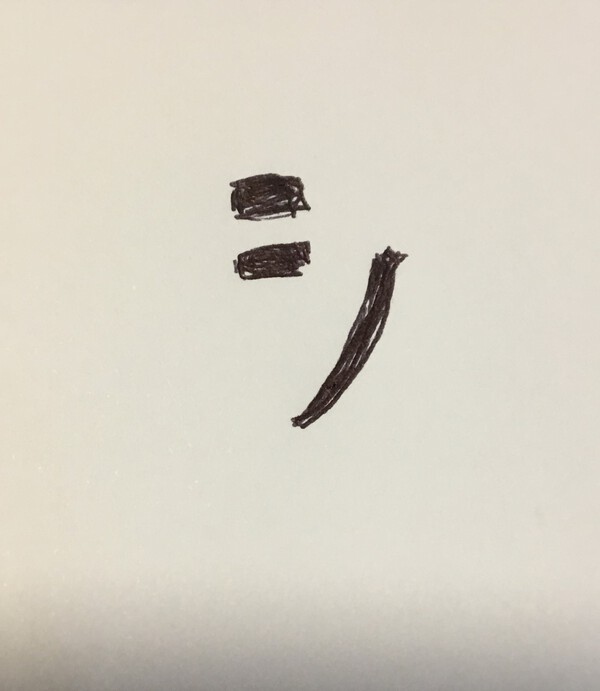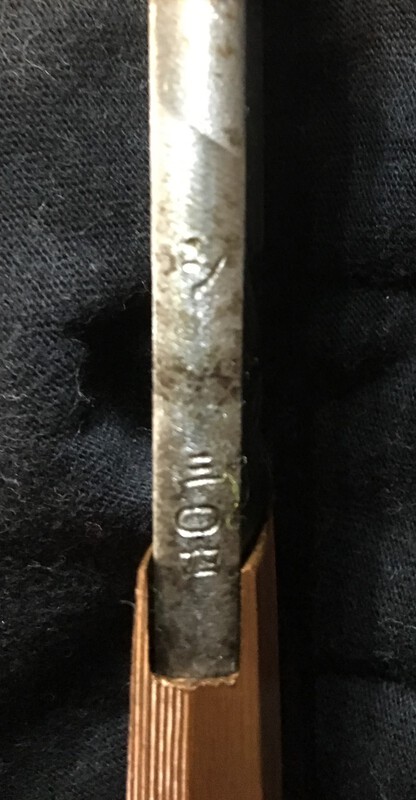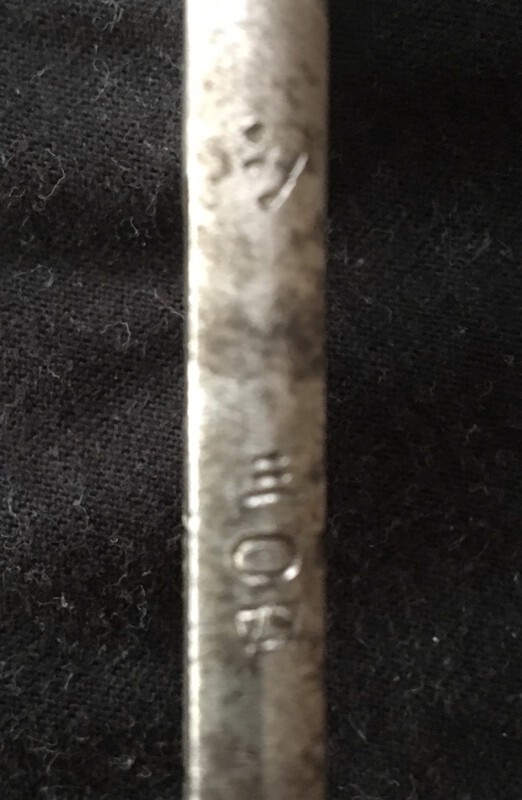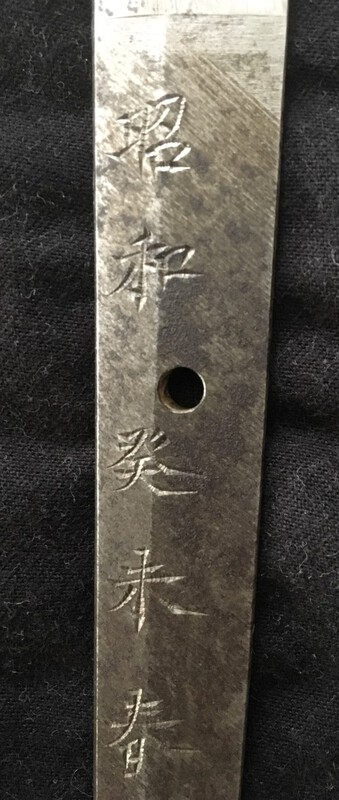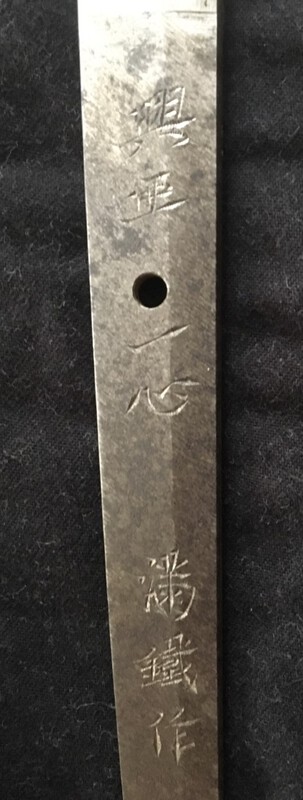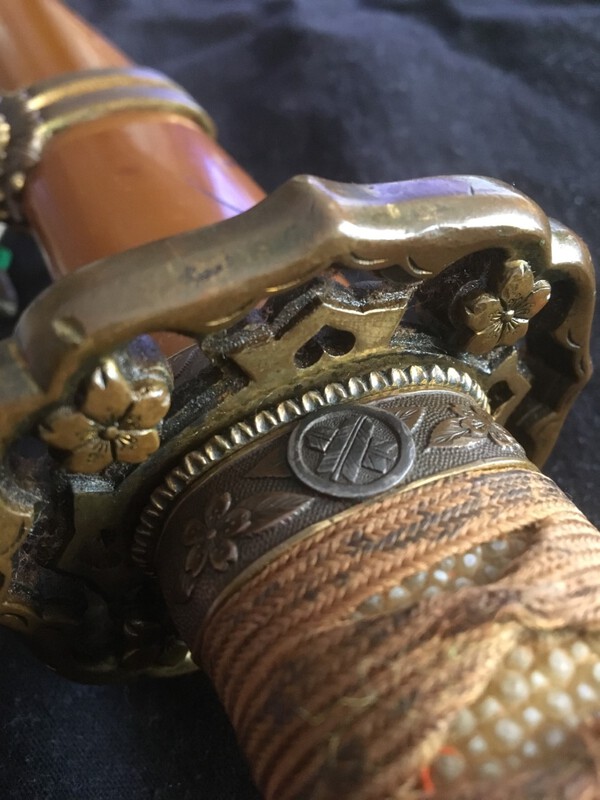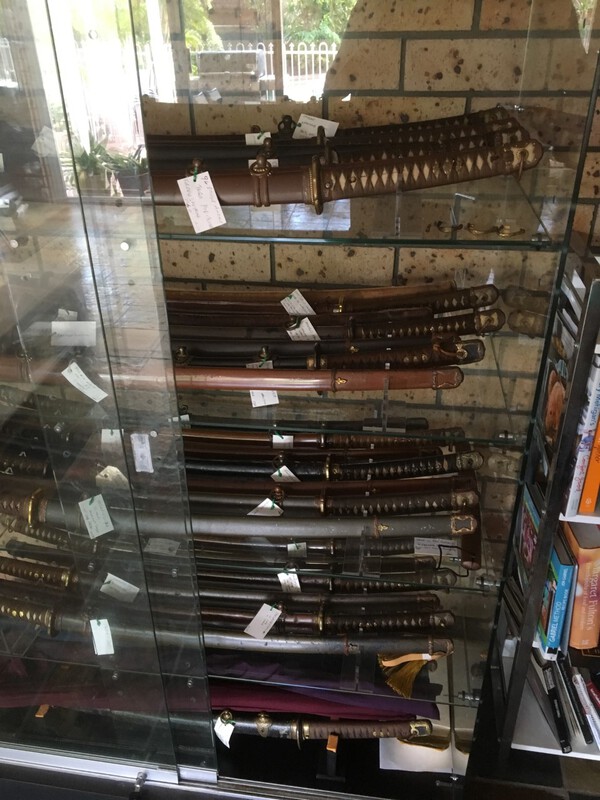-
Posts
1,902 -
Joined
-
Last visited
-
Days Won
85
Content Type
Profiles
Forums
Events
Store
Downloads
Gallery
Everything posted by IJASWORDS
-
These days koshirae like this with matching component numbers and tassel, are almost worth the price.
-

Attention Mantetsu Owners: A Survey
IJASWORDS replied to Bruce Pennington's topic in Military Swords of Japan
-

Attention Mantetsu Owners: A Survey
IJASWORDS replied to Bruce Pennington's topic in Military Swords of Japan
-

Attention Mantetsu Owners: A Survey
IJASWORDS replied to Bruce Pennington's topic in Military Swords of Japan
-
David, if you read my last contribution in Nihonto?, I tried to make the case for exactly that, but I used the word fake rather than gimei. Maybe if the Japanese are unwilling to do this, the USA through their NBTHK may be able to create a subset covering these in the shinsa.
-
Paul, I think your answer probably answers all my questions. It's probably all we can do now is hypothesize and watch the Japanese into the future on what stance they adopt. But in an era of fake swords increasing, even WW2 stuff, collectors, and students of Japanese swords need some system of authentication. Unless of course the Japanese authorities want to restrict the number of swords in public hands by maintaining the category "weapons".
-
Paul, I saw a Koa Isshin for sale at the DTI last year in Japan in shin gunto koshirae. Clearly not made from traditional materials, and some doubt exists about its method of manufacture. It was obviously a WW2 weapon. So why would not this be classed as a weapon and banned, confiscated or destroyed?
-
Since the swords of the Shinto period seemed to be more flamboyant than functional, and swords of the Shinshinto period were the precursor of Gendaito, they must have been good functional weapons for WW2 officers.
-
The shin gunto (army sword) inscription is 1940.
-
So David, we can attribute Japanese names to swords made in the period of this thread, Showa, Gendai, Shinsakuto. But there are swords made in this period that are clearly made in Bizen, Soshu, Mino etc traditions. Is this an accident of the forging and quenching process dictated by time constraints of war, or in fact did the sword smiths want to make a classical nihonto of a particular tradition? For example I have a WW2 Yasumasa in 98 mounts that would hold its own (certainly in looks) against an "old" blade, probably in Soshu tradition. It may have been a special order for an officer, but none the less, time and considerable effort was put into it during war time. Is this in your opinion a true nihonto in the accepted definition?
-
Jean C is correct, but it must be noted that from iron sand in the tatara, to the finished sword, the metal never melts. The tamahagane is pure with respect to metal alloys, but is impure with respect to slag, gas bubbles, oxides etc, and is a metal sponge. On hammering, these impurities find their way to the surface. When folded, the surface impurities and the way the tamahagane has been layered, gives rise to an individually beautiful hada.
-
The motivation for kicking off this thread, was not to be argumentative, but to once and for all settle, at least in my mind, the definition of nihonto, which seems means different things to different people. As you may deduce, I love my Showa/Gendai period swords. It started a few weeks ago when my teacher (of swords) was trying to educate me on the features of Bizen, Soshu, etc on some very old blades, all with Tokobetsu Hozon papers. After studying the hada, habuchi, and hataraki on the nihonto he had pulled out of his collection, I said "hang on a minute", I have swords made in the 1940's that have these features. Hence my question, if it is impossible to determine what material a blade was made from, and they exhibit the 4H's, and they were made in Japan, then are they not nihonto? Some may argue that WW2 swords made from tamahagane have star stamps. But Yasukuni Minatogawa, Sadakatsu to name a few do not. I have heard about true accepted nihonto, that in one case was made from 200 year old nails, and another from smashed up old iron tea pots.
-
Paul, I think what I was indicating was exactly what you said. Once a nihonto is made, it is impossible to determine what material it was made from. Only the evidence that it WAS made in the traditional way. So the 4H's are evidence of a nihonto.
-
David, I think Bruce is using the word traditionalist to describe a person who describes an art sword made in the accepted traditional method. And a modernist who uses the literal meaning of Nihonto....Japanese-sword, regardless of its manufacturing process.
-
So if a sword exhibits, Hada Hamon Habuchi Hataraki Is it a true nihonto, regardless of the type of steel used, or forging method employed? Folding and water quenching appear to be the only common denominator. I am sure over the centuries, other raw materials than tamahagane have been used. For example, if a 1942 Koa Isshin, or a 1943 Emura exhibits the 4H's above, it's a true nihonto?
-
It's an oily.
-
-
I have mons on swords made in the Showa period. For example on a Masafusa with a hot stamp, made by the Kobuse method. And on an average mumei Showa blade with no stamps or date. Both in '98 mounts.
-
Samurai Monkey has used some of my photos that I have posted here on NMB. Problem is, if you Google images of a certain sword, Google has many images from NMB, eBay, other sword sites, and sword vendors.
-

So how big a loss do you take?
IJASWORDS replied to Stephen's topic in Auctions and Online Sales or Sellers
Stephen, if its any help, most of us go through stormy times with little hope in sight. Got so bad, used to wait until visitors left so I could put my hand in the cracks of the sofa for coins that may have fallen out of pockets. In a moment of desperation I walked into a church (no, I didn't rob it) and the minister was putting flyers in the entrance. He asked if he could help with anything, and I uploaded on him. After listening he gave me advice that has stuck with me, basically about our own obligation to help get out of the mess, whilst having faith that it will happen. His words were..... "Pray to God in a storm, but you gotta keep rowing". -
Fred, no where have I used the words fake or scam, I was very careful not to, but highlighted concerns and anomalies, of which other contributors also picked up when pointed out... I didn't realise you were the seller, as you originally posted it in the military section for comment. And it got comments. So being a forum for show and tell, and not for sale, it was fair game to discuss and comment. And happens I have a couple to compare it to. If you had originally posted it in the for sale section, I would not comment. Your offer to guarantee it should give buyers the confidence to bid. Good luck with the sale.



